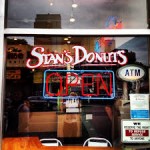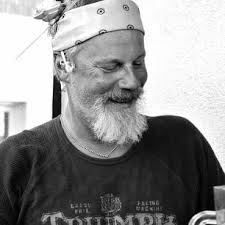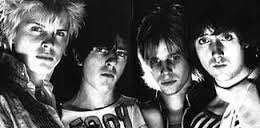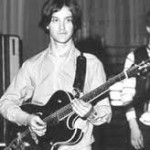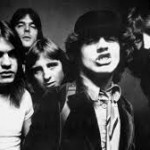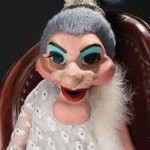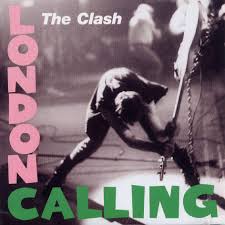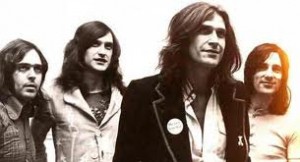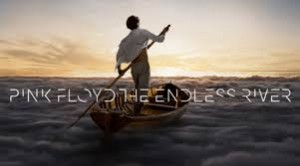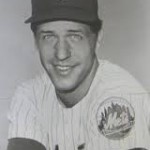Listen, there is very goddamn little need to add my churning, gasping puffs of breath to the howl of outrage over the Rock’n’Roll Hall of Fame. First of all, there are a lot more important things to wax indignant about; secondly, saying the Rock’n’Roll Hall of Fame is full of shit is like saying the rents in NYC are too damn high, or that Dick Cheney is a war criminal, or that buffalo chicken doesn’t belong on a slice of pizza, or that Sting, the Shabbos Goy of Reggae, is a tool: it is so obvious that it no longer needs stating.
Breaking News! The Rock’n’Roll Hall of Fame is full of shit! In other Breaking News, water is wet, the New York Yankees threw the 2014 season to make a billion dollars carting around the horny corpse of Derek Jeter, and Jim J Bullock is gay!(Nevertheless, we add parenthetically…The following artists are NOT in the Rock’n’Roll Hall of Fame: Roxy Music, the New York Dolls, the Smiths, the Carpenters, Cheap Trick, the B52s, Joe Cocker, ELO, Joy Division, the Monkees, Sonic Youth, the MC5, and most horrifically – in my opinion – Kraftwerk, who ARE ONLY THE SECOND MOST INFLUENTIAL BAND OF ALL TIME. Let me also gurgle that in 2015, the Hall is presenting Ringo Starr with the Award for Musical Excellence – THAT’S NOT A TYPO. Presenting Ringo Starr with an Award for Musical Excellence is a little like presenting Dave Grohl with an Award for Public Reclusiveness.)
But rather than CONTINUE the dialogue regarding how truly ridiculous and corrupt the Rock’n’Roll Hall of Fame is, instead I would like to suggest A CALL TO ACTION. This is pretty straightforward:
FIRST. I call on all my acquaintances/associates who are voting members of the Rock’n’Roll Hall of Fame to resign, and do so publicly.
I’ll be honest – I don’t know WHICH of my friends are voters, but I am goddamn sure I know a few. This isn’t like the Student Council at Great Neck South, where you earnestly convince yourself that your Voice of Dissent will surely make a difference. Friends, your intelligence, perception, and knowledge of musical history mean NOTHING within the overall context of the CLOWN COLLEGE that is the Hall of Fame. This is a BULLSHIT organization and YOU KNOW IT, and WHOEVER YOU ARE, I GUARANTEE, I mean I one-hundred perfuckingcent GURANFUCKINGTEE that the STATEMENT YOU WILL MAKE BY RESIGNING AS A VOTING MEMBER WILL MAKE MORE OF A DIFFERENCE THAN WHATEVER IMPACT YOU CAN MAKE BY STAYING. Let me repeat (because I LOVE repeating myself, even more than I love those donuts they used to have at Stan’s Donuts in Westwood that had an entire peanut butter cup INSIDE the donut): The MC5, the Dolls, Sonic Youth, and Kraftwerk are NOT in the fucking Rock’n’Roll Hall of Fame. How can you LEGITIMIZE being part of such an asinine group?
You CAN’T. Period…unless they are employing you and/or giving you health insurance. It’s damn hard to get a job and it’s hard to get health insurance. Shit, if you were a friend of mine and The Josef Mengele Memorial Institute For the Creative Exploitation of Twins was giving you health insurance, I would probably give you a pass, especially if they gave you Dental.Secondly, I call on people I know of intelligence, taste, and influence to band together to form a RIVAL Hall of Fame that can TRULY honor the creative innovators, business pioneers, and commercial dynamos of pop and rock history. Of course, you don’t have to CALL it the Hall of Fame, we’ll think of another suitable name.
This time, I will name names, and suggest some people of influence and intelligence, all of whom are well aware of the intricacies, magical achievements, and beautiful dark alleys of rock and pop history, and who would be ideal to start this thing: Danny Goldberg, Chris Morris, Steve Hochman, Tim Page, Michael Alago, Nik Cohn, Hugo Burnham, Ira Robbins, Merle Ginsberg, Evan Davies, Martin Atkins, Steve Wynn, Steve Lillywhite, Doug Herzog, John Rubelli, Karen Glauber, Jim Testa, Seth Swirsky, Leyla Turkan, Sally Timms, Paul Sanchez, Perry Watts-Russell, Janet Billig, Mitch Easter, Ben Sandmel, Binky Phillips, Karen Schoemer, Jack Rabid, Carol Kaye, Moby, Martha Quinn, Matthew Kaplan, Roy Traikin, THIS IS ALL JUST OFF THE TOP OF MY HEAD, but DAMN, wouldn’t you trust THESE PEOPLE to help honor the great men and women who helped make rock’n’roll the defining meme of our generation?
And I sincerely doubt ANY of these people would sit around making up awards for the E Street Band or putting Hall & Oates in the Hall of Fame BEFORE the MC5 or the Dolls. Rock’n’Pop is a beautiful and meaningful story with powerful repercussions in so many aspects of our lives; the people who built this business and made this art form deserve to be commemorated in a legitimate way.
So do something, people, or stop fucking complaining.
And I’ll underline this (since I love repeating myself more than I love the pizza at Benny Tudino’s, but less than I love Hawkwind): IF YOU ARE A VOTING MEMBER OF THE ROCK’N’ROLL HALL OF FAME, RESIGN. RESIGN NOW. Make a statement that their BULLSHIT is, well, bullshit.Godfather of Slocore OUT.


